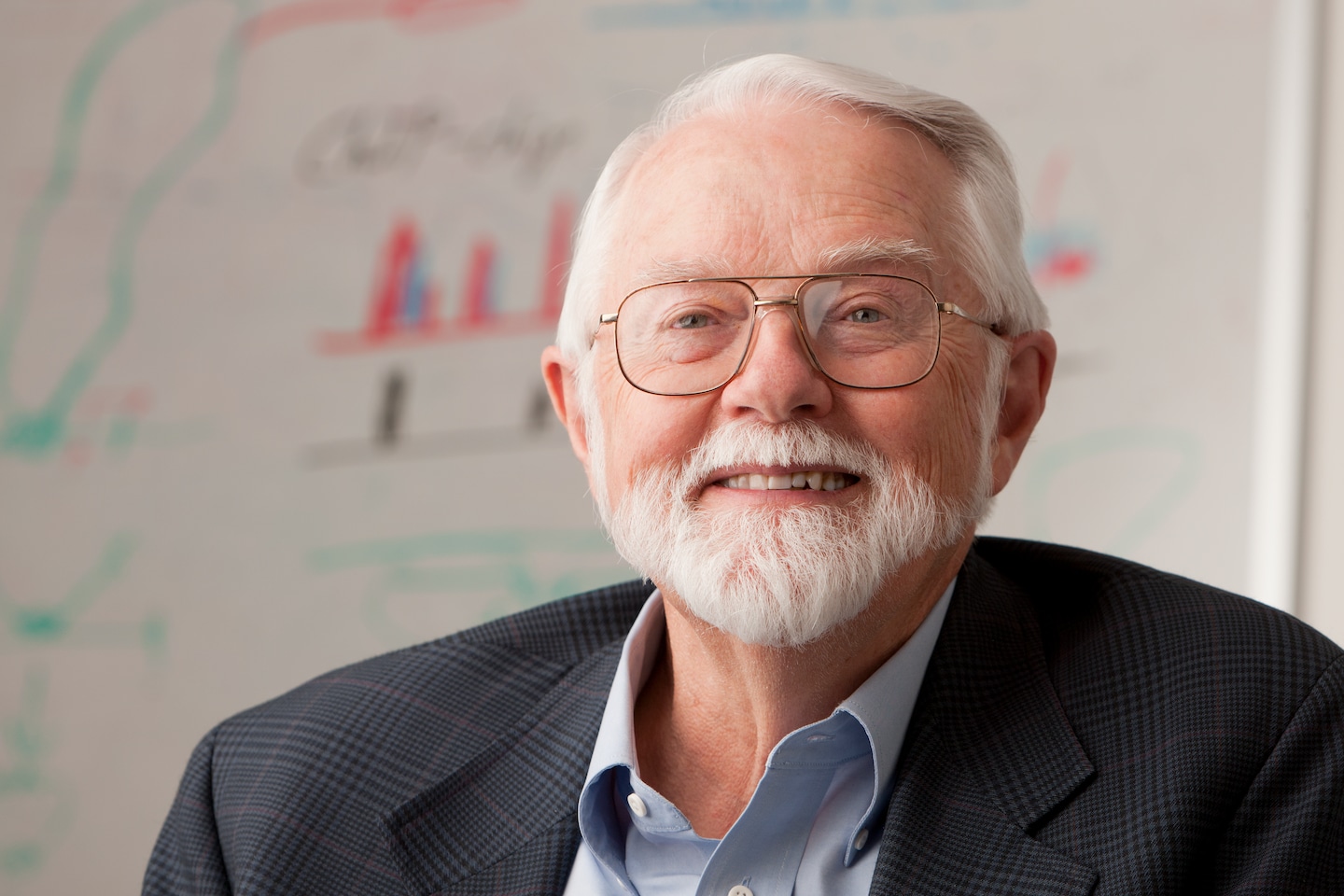Arthur Riggs, who helped develop diabetes treatment, dies at 82

Dr. Riggs, who was trained as a biochemist, had an interest in genetic modification and, as early as 1968, proposed a theory that the emerging science might be useful in treating diabetes.
He made his most significant work in a groundbreaking 1977 experiment in collaboration with other scientists, most prominently Keiichi Itakura, also from City of Hope, and Herbert Boyer, who had left the University of California at San Francisco to launch the biotechnology company Genentech.
Led by Dr. Riggs, the researchers sought to develop a synthetic gene called somatostatin, a mammalian hormone. Working backward from the protein structure, which had 14 amino acid components, Dr. Riggs and Itakura reverse-engineered somatostatin’s genetic code. They refined their experiments to make the process more effective.
“The artificial somatostatin was proving not to be very stable when injected inside a bacterium,” Itakura told the Los Angeles Business Journal last year. “Dr. Riggs had the idea of combining the small somatostatin gene with a larger protein to give it more stability. That was a critical development. Without it, the artificial gene would not have been of much use.”
The key discovery was not the gene itself but the method used to create it in a laboratory.
“It was the first human-designed and man-made gene that functioned in any organism,” Dr. Riggs said in a 2010 interview with the Proceedings of the National Academy of Sciences. “It was the first mammalian hormone produced in bacteria, and it jump-started the biotechnology industry.”
Dr. Riggs, Ikatura and Boyer then turned their attention to insulin, a hormone that controls blood sugar levels and is particularly crucial to people with diabetes. Insulin was a more complex hormone, with 51 amino acids, but the scientists simply applied the technique they had already developed for somatostatin.
“We used the same method, simply writing out — and then making — a gene coding for human insulin,” Dr. Riggs said.
They succeeded in creating synthetic insulin in 1978. Within four years, Genentech had formed a partnership with the pharmaceutical firm Eli Lilly to market synthetic insulin under the brand name Humulin.
It proved to be a lifesaving development for millions of people with diabetes, and it meant that insulin no longer had to be extracted from animals.
“We chose insulin because it looked doable, and there was a need,” Dr. Riggs said. “At the time, diabetics were being treated with cow insulin because there was no source of human insulin. And cow insulin resulted in a high rate of allergic reactions.”
The genetic technique that Dr. Riggs and Itakura developed, using recombinant DNA, is also technological foundation of monoclonal antibodies, a therapy widely used in treating cancer, autoimmune disorders, macular degeneration, covid-19 and other disorders.
Dr. Riggs had patents on his developments, but he resisted all offers to join biotech companies, choosing instead to stay at City of Hope. He published hundreds of research papers but gave almost no interviews to news organizations
“He was right there, at one of the starting points of the modern biotech industry — his team at the City of Hope was the first to make a gene that worked to treat a disease,” Peter Dervan, a chemistry professor at Caltech, told the Business Journal. “Yet even though his work has improved the lives of millions of diabetics worldwide, he is relatively undiscovered and certainly underappreciated.”
Arthur Dale Riggs was born Aug. 8, 1939, in Modesto, Calif. He was 6 when his family moved to San Bernardino, Calif. His mother was a nurse. His father, a onetime farmer with an eighth-grade education, operated a mobile home park and had such mechanical skills that he built autogiros — a combination of airplane and helicopter — from scratch.
Dr. Riggs was 10 when his mother gave him a chemistry set. He received a bachelor’s degree in chemistry from the University of California at Riverside in 1961, then studied biochemistry at Caltech, receiving a doctorate in 1966. He worked at the Salk Institute for Biological Studies in San Diego before joining the staff at the City of Hope, near Los Angeles, in 1969.
In addition to his scientific work, Dr. Riggs was instrumental in building City of Hope into a prominent independent research facility and hospital for cancer and other diseases. He directed its Beckman Research Institute and was the founding dean of its graduate school.
“My philosophy for scientific leadership is to make suggestions, almost never orders,” Dr. Riggs said in an internal City of Hope publication in 2019.
He was named to the National Academy Sciences in 2006. When he turned 81 in 2020, Dr. Riggs stepped down as director of City of Hope’s Diabetes & Metabolism Research Institute, which was renamed in his honor.
Survivors include his wife since 1960, Jane Riggs; three children; a sister; and three grandchildren.
In 2008, the California Supreme Court ruled after 12 years of litigation that Genentech was required to pay City of Hope $300 million in damages for breach of contract on royalty payments, mostly on patents obtained by Dr. Riggs and his associates.
With countless researchers and biotech companies using his scientific advances to produce genetically engineered therapeutic products, Dr. Riggs became immensely wealthy, without showing it.
He lived in the same house for 50 years, drove modest cars and quietly gave most of his royalty earnings to the City of Hope. Only last year was the amount of his largesse to the institution revealed: more than $310 million.
After stepping away from his administrative posts, Dr. Riggs continued to work on scientific projects until days before his death.
“I could have retired into a South Pacific mansion and enjoyed myself on the beach,” he said, “but I would have been bored within a week.”






